| Previous | Index | Next |
Esquire's
Olympics Preview:
THE PERFECT HUNDRED METERS Current world record: 9.9 sec. Projected outer limit: 9.6 sec.
hree factors determine speed in a sprint. The first is the
condition of the track. If it's soft, or if it's slippery, horizontal
force is absorbed or lost. If the track is hard and springy, none of the leg drive is dissipated. The second determinant is what Gideon Ariel calls "angular displacement of the leg joints." Whether it's an Olympic sprint or a slow walk to the bar, forward movement results from bending the three segments of the leg-hip to knee, knee to ankle, ankle to ball of the foot-from the horizontal plane. In mechanical terms, the total amount of angular
displacement of these leg segments in a given period of time is a measure of how fast the leg is traveling.
The third element in sprint speed is the length of the leg segments.
A sprinter with longer limbs covers more ground in each stride,
although his angular displacement per moment in time may be the
same as or even less than that of a shorter competitor.
Thus, by measuring both angular displacement per moment
in time and leg length, Gideon Ariel can calculate the speed
of an athlete regardless of the effects of external influences
such as track conditions or wind. He can thus project sprint perfection, beyond which a human can't go.
Eddie Hart and Steve Williams, two U.S. sprinters who have equaled the hundred-meter world record of 9.9 seconds, were compared on computers with Jesse Owens, whose best time was 10.2. Owens and Hart, both under six feet tall, showed an equal
angular displacement. Williams, close to
three inches taller than the others, moved
his legs slower but covered more ground
each step. Gideon Ariel's analysis: a
triple dead heat of 9.9 if Owens-who ran on a' slower track-faced Hart and Williams. "Comparing Owens' times with theirs is like matching a man who runs in sand with sprinters on a hard-surface road," says Ariel.
What makes the ultimate sprinter? Rapidity of leg movement is a function of the neuromuscular system. "A coach could find the most promising sprinters," remarks Ariel, "by timing the knee-jerk reflex of candidates." Other things being equal,
longer legs with a smaller torso provides the optimum
sprinter physique.
Although arm movement does add to the horizontal force, its primary function is the prevention of torque or wobble due to hip rotation. What does limit modern competitors are spiked shoes. These overcompensate for possible slippage. Every time those spiked shoes dig into the track, force is wasted pulling them out.
If all external conditions were ideal, Ariel figures that
with a ten-percent increase in leg length over that of the best contemporary sprinters, and with ten percent more muscle power than shown to date, a 9.6 hundred meters or an 8.8 hundred yards is possible. Greater speed would probably tear muscles, even break bones.
Illustrated by Andrew Moszynski
ESQUIRE July 1976

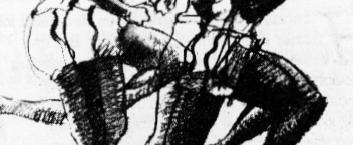
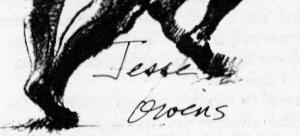



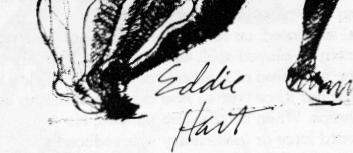
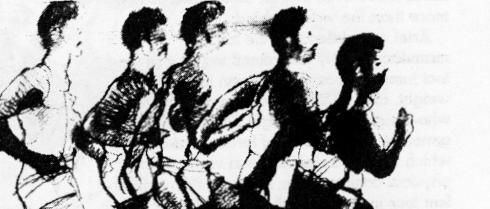
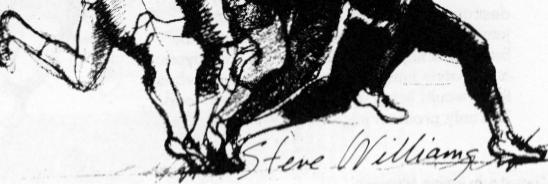
| Previous | Index | Next |